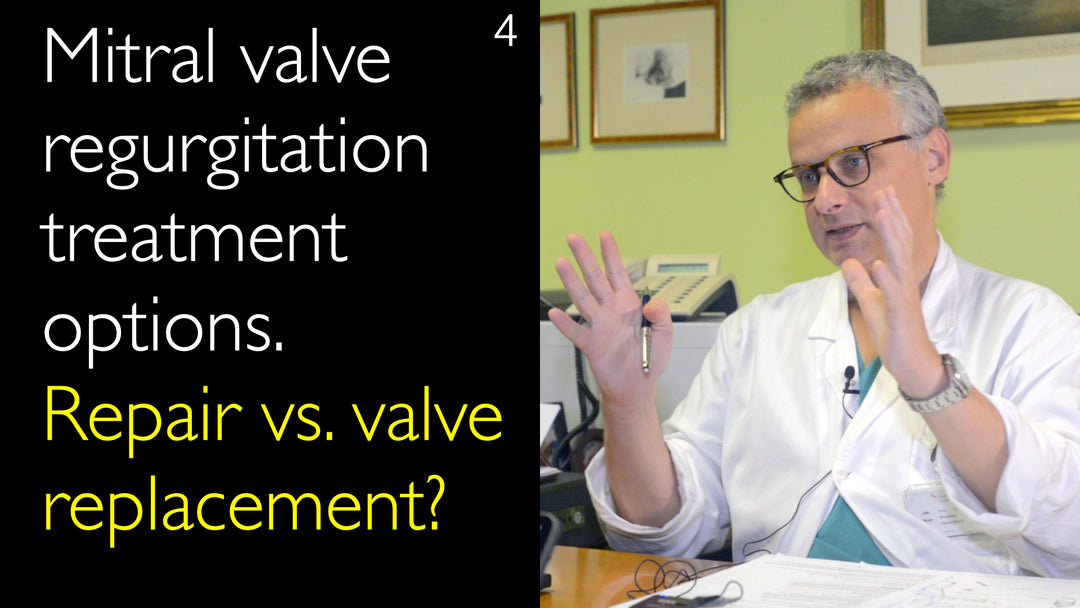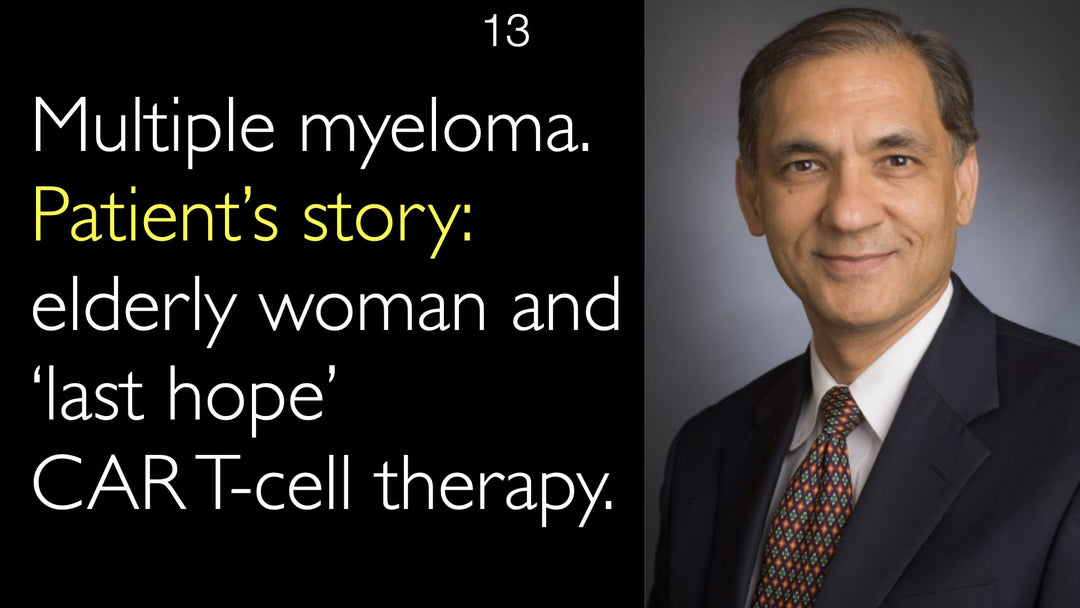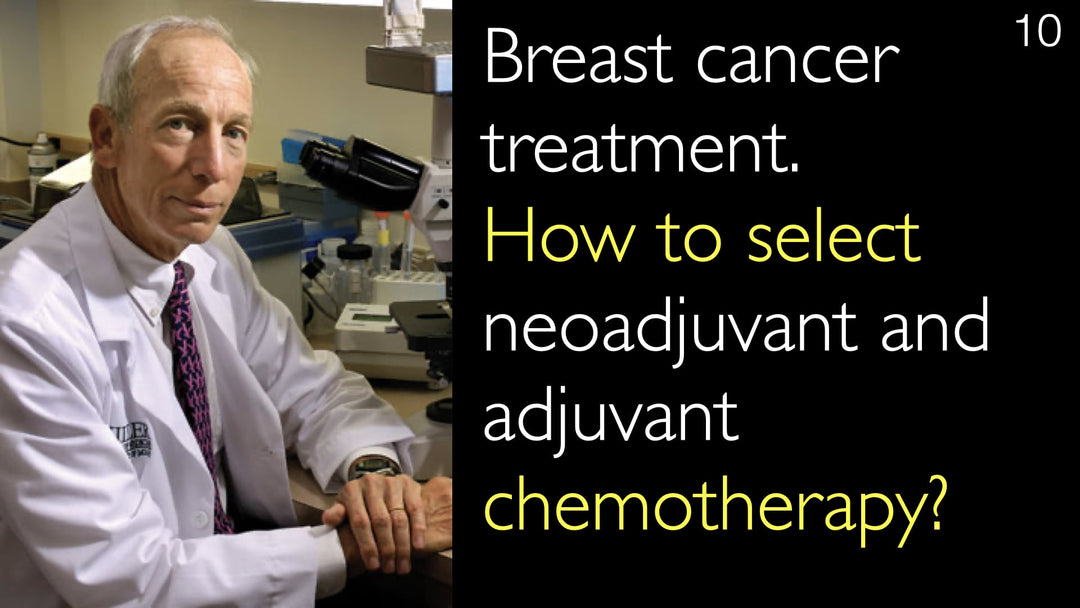Tohtori Francesco Maisano, MD, käsittelee hoidon tavoitteita, jotka tähtäävät regurgitaation ja stenoosin poistamiseen ilman jäännösvaurioita. Hän ennakoi merkittävää siirtymistä vähemmän invasiivisiin hoitomuotoihin kaikissa potilasryhmissä tulevina vuosina.
Mitraaliläpän vajaatoiminnan hoito: kirurginen korjaus vs. transkatetrihoito
Hyppää osioon
- Primäärinen vs. funktionaalinen mitraalivajaatoiminta
- Degeneratiivisen MR:n kirurginen hoito
- Transkatetri reuna-reuna -korjaus
- Funktionaalisen MR:n hoitosuositukset
- Tulevaisuuden trikuspidaaliläpän hoidot
- Läpänkorjaus vs. läpänvaihto -keskustelu
- Koko tekstitys
Primäärinen vs. funktionaalinen mitraalivajaatoiminta
Mitraaliläpän vajaatoiminnan hoidossa on ymmärrettävä kaksi erilaista tautiluokitusta, joilla on täysin erilaiset hoitostrategiat. Tohtori Francesco Maisano, MD, korostaa, että primäärinen mitraalivajaatoiminta johtuu pääasiassa geneettisestä mitraaliläpän prolapsista. Tämä kattaa kirjon fibroelastisen puutoksen aiheuttamasta yksittäisen säikeen repeämästä Barlown taudin laajaan, liialliseen kudokseen.
Toisin kuin primäärinen, funktionaalinen mitraalivajaatoiminta on toissijaista muihin sydäntiloihin, kuten sydämen vajaatoimintaan. Tällöin läpän rakenne on normaalista poikkeamaton, mutta sen toiminta on häiriintynyt. Tohtorit Anton Titov ja Maisano keskustelevat siitä, kuinka tämä perustavanlaatuinen ero synnyssä määrää täysin erilliset hoitopolut ja päätöksentekoprosessit kardiologeille ja kirurgeille.
Degeneratiivisen MR:n kirurginen hoito
Avosydänkirurgia on edelleen kultainen standardi degeneratiivisen mitraalivajaatoiminnan hoidossa nuoremmilla potilailla, joilla ei ole muita sairauksia. Tohtori Francesco Maisano, MD, selittää, että Barlown tauti koskee tyypillisesti 40–55-vuotiaita potilaita ja vaatii usein useita kirurgisia toimenpiteitä pelkän anuloplastian lisäksi. Näitä monimutkaisia korjauksia voidaan nykyään suorittaa vähävaraisesti videoskooppitekniikalla periareolaarisilla leikkauksilla.
Robotti-mitraaliläpän kirurgia tarjoaa etuja lähinnä kirurgisessa koulutuksessa, ei niinkään potilaiden lopputuloksissa, tohtori Maisanon mukaan. Teknologia mahdollistaa koulutettavien seurata paremmin monimutkaisia toimenpiteitä, mutta se tarjoaa vähän etuja perinteisiin vähäinvasiivisiin tekniikoihin verrattuna, kun kokeneet kirurgit käyttävät pitkiä instrumentteja. Tämä kirurginen asiantuntemus varmistaa, että potilaat saavuttavat hoidon tavoitteet: ei vajaatoimintaa, ei ahtaumaa eikä jäännösanatomialisia vaurioita.
Transkatetri reuna-reuna -korjaus
Transkatetri reuna-reuna -mitraaliläpän korjaus on mullistanut vanhempien potilaiden hoidon, joilla on degeneratiivinen mitraalivajaatoiminta ja muita sairauksia. Tohtori Francesco Maisano, MD, kuvailee MitraClip- ja Pascal -teknologioita, jotka mahdollistavat katetriperäisen korjauksen ilman avosydänleikkausta. Vaikka tekniikka ei ole yksinkertaisin, nämä toimenpiteet voivat tarjota erinomaisia tuloksia kokeneissa käsissä potilaille, jotka eivät ole optimaalisia kirurgisia ehdokkaita.
Tohtori Anton Titov, MD, tutkii yhdessä tohtori Maisanon kanssa, kuinka nämä endovaskulaariset vaihtoehdot laajentavat hoitomahdollisuuksia. Nykyiset kliiniset tutkimukset selvittävät transkatetrilähestymistapoja jopa matalan riskin potilailla, mikä viittaa tulevaisuuteen, jossa useampia degeneratiivisen mitraalivajaatoiminnan tapauksia voidaan hoitaa ilman perinteistä kirurgiaa. Alalla kehittyy jatkuvasti, ja uusia laitteita tulee eri maailmanmarkkinoilta.
Funktionaalisen MR:n hoitosuositukset
Funktionaalisen mitraalivajaatoiminnan hoito on nykyisten suositusten mukaan siirtynyt pääosin endovaskulaariseen alaan. Tohtori Francesco Maisano, MD, toteaa, että kirurginen toimenpide on nyt tyypillisesti varattu tapauksille, joissa on yhdistettyjä patologioita, jotka vaativat sepelvaltimoiden ohitusleikkausta tai aortaläpän toimenpiteitä. Uusimmat hoitosuositukset hyväksyvät porrastetut lähestymistavat, joissa käytetään endovaskulaarisia toimenpiteitä eristetylle funktionaaliselle mitraalivajaatoiminnalle.
Tohtori Maisano huomauttaa, että eristetyt funktionaalisen mitraalivajaatoiminnan tapaukset ovat käytännössä yhä harvinaisempia. Useimmat potilaat esiintyvät lisätilojen, kuten eteisvärinän tai sepelvaltimotaudin, kanssa, mikä vaikuttaa hoitopäätöksiin. Tämä kehitys heijastaa laajempia suuntauksia kohti vähäinvasiivisia hoitostrategioita, jotka asettavat etusijalle potilaskohtaiset tekijät ja toimenpiteiden turvallisuuden.
Tulevaisuuden trikuspidaaliläpän hoidot
Trikuspidaaliläpän vajaatoiminnan hoito edustaa nousevaa eturintamaa rakenteellisten sydäntautien hoidossa. Tohtori Francesco Maisano, MD, ennustaa, että kolmen–neljän vuoden sisällä useimmat trikuspidaaliläpän toimenpiteet siirtyvät transkatetrilähestymistapoihin. Nykyiset kirurgiset ehdokkaat, joilla on säilynyt oikean kammion toiminta ja vähän muita sairauksia, saavat lopulta täysin endovaskulaarisia ratkaisuja, kuten transkatetri anuloplastiaa, reuna-reuna -korjausta ja läpänvaihtoa.
Kehitys heijastaa historiallisia kaavoja mitraaliläpän hoidossa, joissa vaihto aluksi syrjäytti korjaustekniikat. Tohtorit Anton Titov ja Maisano keskustelevat siitä, kuinka trikuspidaaliläpän korjausratkaisut kohtaavat tällä hetkellä teknisesti haasteita, jotka saattavat tehdä vaihtoteknologioista yhä houkuttelevampia mahdollisista haitoista huolimatta. Tämä jatkuva innovointi heijastaa alan jatkuvaa edistystä kohti vähemmän invasiivisia hoitomuotoja.
Läpänkorjaus vs. läpänvaihto -keskustelu
Mitraaliläpän korjauksen ja vaihdon välinen keskustelu keskittyy ennustettavuuteen vs. pitkän aikavälin lopputuloksiin. Tohtori Francesco Maisano, MD, selittää, että läpänvaihto tarjoaa operaattoririippumatonta ennustettavuutta, koska epäonnistuminen johtuu tyypillisesti laitteen eikä tekniikan rajoituksista. Tämä houkutteleva piirre saattaa johtaa korvausten kasvavaan käyttöön seuraavien viiden vuoden aikana, vaikka korjauksen ylivoima degeneratiivisessa mitraalivajaatoiminnassa on vakiintunut.
Tohtori Maisano kannattaa henkilökohtaisesti jokaisen mahdollisen läpän korjaamista, myöntäen vaaditun lisätyön mutta korostaen ylivertaista turvallisuusprofiilia ja potilashyötyjä. Sydänkirurgian varhaisten päivien historiallinen ennakkotapaus osoittaa, kuinka vaihtoteknologiat syrjäyttivät aluksi korjaustekniikat, ennen kuin todisteet vahvistivat korjauksen edut. Tämä syklinen kaava ohjaa nykyisiä ennusteita siitä, kuinka nousevat transkatetri vaihtoteknologiat saattavat vaikuttaa tuleviin käytäntöihin.
Koko tekstitys
Tohtori Anton Titov, MD: Mitraaliläpän vajaatoiminta on yleinen sydänläppätauti. Se on erityisen yleistä iäkkäillä potilailla. Olet johtava sydänkirurgi vähäinvasiivisessa mitraaliläpän prolapsin hoidossa. Joten mitä hoitovaihtoehtoja on tänään potilaille, joilla on funktionaalinen mitraaliläpän vajaatoiminta? Kuinka hoitaa primääristä rakenteellista mitraaliläpän vajaatoimintaa? Mitä eroa hoidon indikaatioissa olisi näiden kahden mitraalivajaatoiminnan syyn välillä?
Tohtori Francesco Maisano, MD: Hyvä kysymys. On hyvä idea jakaa nämä kaksi alaa, jotka ovat pinnallisesti samankaltaisia, koska ne liittyvät mitraaliläpään. Mutta pohjimmiltaan ne ovat hyvin erilaisia. Myös hoitostrategia on täysin erilainen.
Joten aloitetaan primäärisestä mitraalivajaatoiminnasta, koska se on todennäköisesti helpompaa. Primäärinen mitraalivajaatoiminta johtuu pääasiassa ns. geneettisestä mitraaliläpän prolapsista. Tässä prolapsiluokassa on joitakin alaluokkia.
Klassinen jako on degeneratiivinen mitraalivajaatoiminta fibroelastisen puutoksen vuoksi, mikä tarkoittaa, että mitraaliläppä on lähes normaali. Siellä on yksi vaurio, yleensä säikeen repeämä. Siellä on liehuvuusalue. Yleensä se on P2-liehuvuusvaurio. Tämä on yleisimmin löydetty vaurio. Se on mitraaliläpän takalehden keskiosassa.
Mutta itse mitraaliläppä näyttää edelleen normaalilta. Siellä on ohuet läppälehdet, eikä mitraaliläpässä ole kalkkeumaa. Mitraaliläpässä ei ole liiallista kudosta. Sitten toisessa ääripäässä on ns. Barlown mitraaliläppätauti tai myksoomatauti. Siellä mitraaliläppä on täysin ja laajamittaisesti muuttunut.
Siellä on valtava muutos kaikissa mitraaliläpissä, joissa on liiallista kudosta. Mitraaliläppä on paksuuntunut useilla vaurioilla, useilla prolapseilla. Sitten on kaikkia välimuotoja mitraaliläppätaudeista.
Joten jopa degeneratiivinen mitraalivajaatoiminta ei ole yksi tauti, vaan se on tautikirjon jatkumo. Joten mitraalivajaatoiminnan syyn löytäminen on yksi tekijä oikeiden päätösten tekemisessä mitraalivajaatoiminnan hoidon alalla. Toinen parametri hoitopäätöksissä on potilaan kliininen tila.
Degeneratiivinen mitraalivajaatoiminta on yleensä tauti, joka löytyy suhteellisen nuorilta potilailta. Erityisesti Barlown mitraaliläppätauti löytyy potilailla, jotka ovat 40–55-vuotiaita. Tämä on mitä näet näissä potilaissa, joilla on mitraalivajaatoiminta. Voit nähdä jopa paljon nuorempia potilaita kuin tuo ikä.
Tässä nuoremmassa sukupolvessa mielestäni avosydänkirurgia pysyy parhaana ratkaisuna useimmille potilaille. Se on niin lähinnä siksi, että Barlown mitraaliläppätauti on hyvin laajalle levinnyt tauti. Ja melko usein meidän on tehtävä useampi kuin yksi kirurginen toimenpide hoitaaksemme mitraaliläppää mitraaliläpän anuloplastian lisäksi.
Tämä voidaan tehdä nykyään hyvin vähäinvasiivisella lähestymistavalla. Useimmissa tapauksissa tänään Barlown taudin kirurgista hoitoa varten käytämme videoskooppista lähestymistapaa periareolaarisella leikkauksella.
Tällä hetkellä emme ole olleet aktiivisia robotilla tehtävän mitraaliläpän korjauksen kanssa, mutta robotilla tehty mitraaliläpän kirurgia on vain ratkaisu, joka on kirurgille intuitiivisempi. Jos sinulla on riittävästi kokemusta vähäinvasiivisista lähestymistavoista ja pitkien instrumenttien käytöstä, robotilla tehdyssä mitraaliläpän kirurgiassa ei ole paljon etuja.
Ainoa etu, todellinen etu robotilla tehdyssä mitraaliläpän kirurgiassa, on koulutuksessa. Koska voit opettaa muita kirurgeja helposti, voit nähdä ja todella seurata kirurgeja, jotka tekevät robotilla mitraaliläpän toimenpiteitä. Ja joillekin monimutkaisille sydänkirurgisille toimenpiteille on mukavaa olla kehittynyttä teknologiaa.
Joten jos sinulla on degeneratiivinen mitraalivajaatoiminta nuorella potilaalla, jos ei ole muita sairauksia, mielestäni ei ole keskustelua siitä, että avosydänkirurgia pysyy hoidon kultaisena standardina, ainakin tänään. Mutta on monia potilaita, jotka ovat vanhempia ja joilla on geneettinen mitraaliläppätauti.
Heillä on yksi tai kaksi vauriota tai jopa enemmän mitraaliläpässään. Ja tänään voimme hoitaa näitä potilaita melko helposti erityisesti transkatetri reuna-reuna -mitraaliläpän korjauksella. Meillä on erilaisia työkaluja transkatetri-mitraaliläpän korjaukseen. On MitraClip. On Pascal. On joitakin muita transkatetri-mitraaliläpän korjausmenetelmiä, jotka tulevat Aasiasta.
Tänään jokainen potilas, melkein jokainen potilas, voidaan hoitaa näillä teknologioilla hyvissä käsissä. Se ei ole yksinkertaisin tekniikka hoitaa degeneratiivista mitraalivajaatoimintaa transkatetri reuna-reuna -mitraaliläpän korjauksella. Mutta tehtyäni monia mitraalivajaatoiminnan hoidon tapauksia voin tarjota hyvän palvelun useimmille potilaillamme.
On myös muita asioita. Mutta pitäkäämme se yksinkertaisena. Joten periaatteessa degeneratiivisella mitraalivajaatoiminnalla on pääasiassa kirurginen ratkaisu. Degeneratiivisen mitraalivajaatoiminnan hoito muuttuu endovaskulaariseksi vaihtoehdoksi niille potilaille, joilla on vähemmän ihanteellinen tila avosydänleikkaukselle.
Nämä ovat iäkkäitä potilaita, potilaita, joilla on muita sairauksia, ja niin edelleen. Ja jokaisen potilaan tulisi selvitä näistä toimenpiteistä ilman mitraalivajaatoimintaa, ilman mitraaliläpän ahtaumaa eikä jäännösanatomialisia vaurioita. Nämä pitäisi olla mitraalivajaatoiminnan hoidon tavoitteet. Tämä on tavoite, joka voidaan saavuttaa jokaisessa potilaassa.
Jos katsomme tulevaisuuteen, ennustan, että näemme yhä enemmän endovaskulaarisia hoitoja jopa matalan riskin potilailla, joilla on mitraalivajaatoiminta. Kliininen tutkimus on meneillään tällä hetkellä.
Toiminnallinen mitraalivajaatoiminta on nykyään pääosin endovaskulaarisen hoidon aluetta. Elleivät potilailla ole yhdistettyjä patologioita, jopa viimeisimmät hoitosuositukset julistavat sen. Yhdistettynä muihin indikaatioihin, esimerkiksi sepelvaltimoiden ohitusleikkaukseen (CABG) tai aortaläpän ahtaumaan, toiminnallista mitraalivajaatoimintaa voidaan hoitaa kirurgisesti.
Mutta myös viimeisimmät hoitosuositukset toteavat, että porrastettua lähestymistapaa endovaskulaarisilla toimenpiteillä voidaan saavuttaa. Joten liikumme myös tällä toiminnallisen mitraalivajaatoiminnan endovaskulaarisen hoidon alueella.
Kun siirrymme toiminnalliseen eristettyyn mitraalivajaatoimintaan tai eristettyyn trikuspidaalivajaatoimintaan, mielestäni avokirurgisille toimenpiteille on hyvin vähän indikaatioita. Ehkä avokirurgia voidaan tehdä vain trikuspidaaliläpän vajaatoiminnassa potilailla, joilla on hyvin säilynyt oikean kammion toiminta eikä muita sairauksia. Nykyään trikuspidaaliläpän vajaatoiminta on vielä varhaisessa vaiheessa.
Joten huomenna leikkaan esimerkiksi 70-vuotiaan naispotilaan. Muuten hän on hyvässä kunnossa. Hänellä on hyvä oikean kammion toiminta. Olen varma, että huomenna pystymme poistamaan trikuspidaalivajaatoiminnan tästä potilaasta minimaalisesti invasiivisella kirurgisella lähestymistavalla.
Mutta toisaalta tiedän, että kolmen neljän vuoden kuluttua tämä potilas ei enää koskaan joudu avosydänkirurgiaan, koska voin tehdä transkatetriannuloplastian samalla tavalla kuin teen sen nyt kirurgisesti. Voin tehdä transkateterreunareunakorjauksen samalla tavalla kuin teen sen nyt kirurgisesti. Voin implantoida uuden sydänläpän transkatetrimenetelmällä suunnilleen samalla tavalla kuin voin tehdä sen kirurgisesti.
Joten kun asiantuntemus parantuu ja kasvaa trikuspidaaliläpän hoidoissa, näemme yhä enemmän endovaskulaarisia toimenpiteitä myös trikuspidaaliläpän hoidoissa. Eristetty toiminnallinen mitraalivajaatoiminta on nyt harvinaista. En muista yhtäkään potilasta, jota olen hoitanut viime vuosina, jolla olisi ollut vain toiminnallinen mitraalivajaatoiminta.
Ehkä heillä oli myös eteisvärinä; ehkä he tarvitsivat sepelvaltimoiden ohitusleikkausta. Mutta eristetty toiminnallinen mitraalivajaatoiminta on ollut yksi tärkeimmistä hoidon aiheistamme monia vuosia, mutta nyt se on kadonnut.
Joten minimaalisesti invasiivinen lähestymistapa hallitsee enimmäkseen mitraaliläpän vajaatoiminnan hoitoa tällä hetkellä.
Kyllä, mielestäni minimaalisesti invasiivinen hoito kirurgiassa tarkoittaa minitorakotomiaa ja videojärjestelmäminitorakotomiaa robotin kanssa tai ilman. Tai se tarkoittaa täysin endovaskulaarista hoitoa lyövällä sydämellä. Joten nämä ovat kaksi aluetta, joissa näet ratkaisun näille potilaille.
Ja useimmissa tapauksissa puhumme sydänläpän korjauksesta. Nyt sydänläpän korvaus on nousemassa endovaskulaaristen hoitomenetelmien joukossa. Erityisesti mielestäni trikuspidaaliläpätaudeissa korjausratkaisut eivät vielä ole niin täydellisiä.
Ja tuleeko trikuspidaaliläpän korvauksesta yhä saatavampaa? Muuttaako tämä näkökulmaamme trikuspidaaliläpätaudin hoidossa? En tiedä.
Olin jo tehnyt ennusteeni useita vuosia sitten. Minulta kysyttiin jo yli viisi vuotta sitten, että kun trikuspidaaliläpän korvausteknologiat tulevat saataville, katoaako sydänläpän korjaus? Ja vastaukseni muutamalta vuodelta sitten on sama tänään.
Ehkä sydänläpän korjaus katoaa, mutta sydänläpän korjauksen turvallisuusprofiili on korkeampi. Mutta ilmeisesti näemme todennäköisesti samanlaisen tilanteen kuin sydänkirurgiassa 1950-luvulla. Silloin mitraaliläpän korvausta ei ollut saatavilla. Ja niin kaikki sydänläpät korjattiin.
Sitten mitraaliläpän korvaus tuli saataville, ja kaikki sydänkirurgit hylkäsivät sydänläpän korjauksen, koska se oli vaikeaa ja arvaamatonta. Ja niin he sanoivat, okei, tehdään jotain ennustettavaa. Vedetään sydänläppä pois. Ja ajan myötä tajusimme sydänläpän implantointien rajoitukset.
Joten monet kirurgit kiinnostuivat uudelleen ja alkoivat korjata sydänläppiä uudelleen.
Nykyään mitraaliläpän korjaus degeneratiivisessa mitraalivajaatoiminnassa on kultastandardi. Joten näemme mitä tapahtuu. Mutta ennustan, että seuraavan viiden vuoden aikana näemme kasvavia määriä potilaita, joilla on mitraaliläpän korvaus, koska se on vähemmän operaattoririippuvaista.
Joten sydänläpän korvaus on meille ennustettavampaa. Jos yritän korjata sydänläppää ja korjaus ei suju hyvin, se on minun vikani. Jos implantoin sydänläpän ja läppi ei toimi, se on sydänläpän vika.
Joten monille operaattoreille on parempi valita sydänläpän korvaus. Se on ennustettavampaa ja vähemmän operaattoririippuvaista. Mutta me kaikki tiedämme, että mitraaliläpän korvauksessa on joitakin haittoja. Ja sydänläpän korvauksen turvallisuusprofiili ei ole edes tänään sama.
Joten yritän henkilökohtaisesti korjata jokaisen sydänläpän, jonka löydän tielläni. Ja tämä tarkoittaa paljon työtä joissakin tapauksissa. Mutta lopulta päivää, sydänläpän korjauksella on monia etuja verrattuna korvaukseen.








